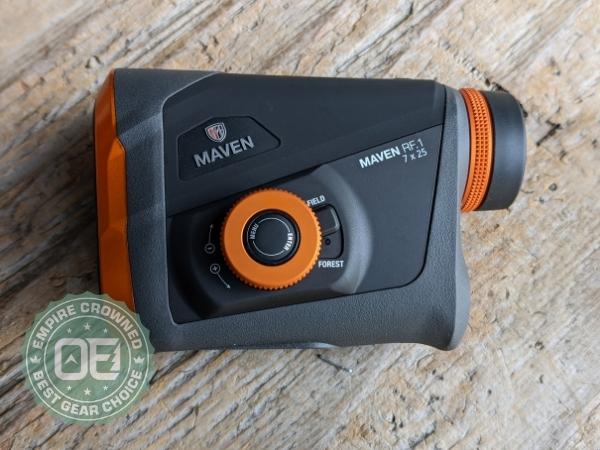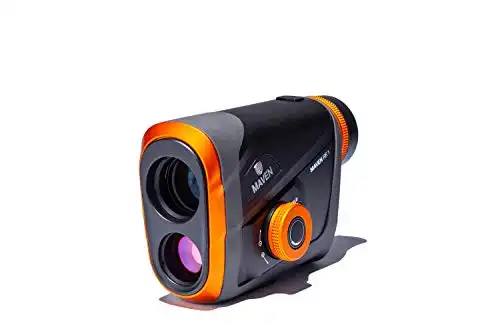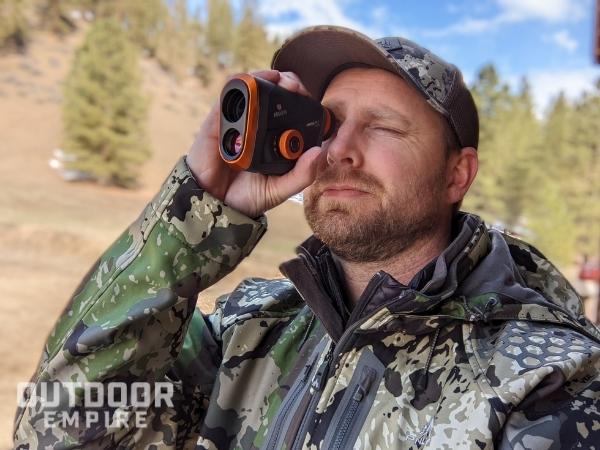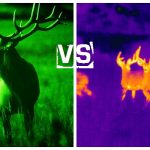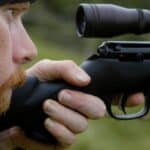When I got the chance to do a Maven RF.1 rangefinder review, I was stoked! I’ve had it for a while now and have used it quite a bit at the gun range, in the mountains turkey hunting, and in my backyard.
For us to test the RF.1, Maven sent one to us here at Outdoor Empire. However, they had no influence on the content of this review. The opinions here are entirely my own and no one paid us for this article, though the links below are affiliate links, FYI.
Maven is an optics company out of Wyoming that is making clever (and useful) changes to many of the staple optics products we all use, like scopes and binoculars. Then they sell directly to consumers, which seems to me to yield premium glass at mid-range prices. The RF.1 is no different.
The Maven RF.1 is a fully rugged, long-range laser rangefinder for hunting and shooting. It has a high-end laser sensor, user-friendly controls, and top-notch optical quality. Though it’s not the lightest or most compact rangefinder, it costs nearly half the price of its closest competitors.
- Best price in its class by a long shot
- High-quality laser sensor with longer max range than competition
- Intuitive controls and display are easy to use
- Unlimited lifetime warranty could make it the last rangefinder you ever buy
- Field and Forest modes make it useful in both open country and dense vegetation
- Bulkier and heavier than many alternatives
- No advanced ballistics or archery functionality
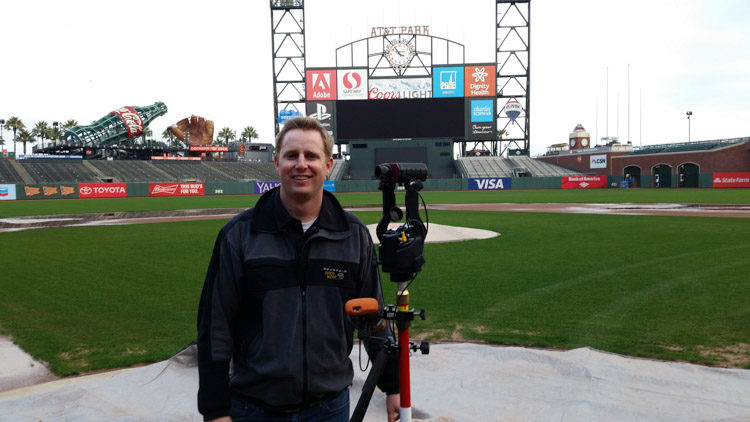
On a previous career path, I actually consulted with and equipped land surveyors, mines, transportation departments and others on professional measurement equipment and software for field data collection. Laser rangefinders were among the tools I trained folks on to acquire precise measurements of all sorts of things.
In particular, I supplied rangefinders from a company called Laser Technology, Inc. So I was pleasantly surprised to see the Laser Tech sticker on the bottom of the RF.1.
The review went pretty well from there. Read on to find out why we gave it our Empire Crowned Best Gear Choice label!
Maven RF.1 Hands-On Review
A newish optics company trying to develop their laser ranging sensor would have made me pretty skeptical that it could be any good. So discovering that Maven worked with Laser Tech to bring the RF.1 to market was great news to me and the first sign of quality.
Laser Tech specializes in laser distance ranging technology. They hold several patents and have been doing it for decades, so this is not some cheap, experimental sensor inside the RF.1.
Besides having confidence in the measurements given, the decision-making criteria that I base my hunting rangefinder reviews on are as follows:
- Optics Quality
- Display
- Form Factor
- Ruggedness
- Features
Spoiler alert: the Maven RF.1 gets pretty high marks in each category.
Optics Quality as Good as It Gets in a Rangefinder
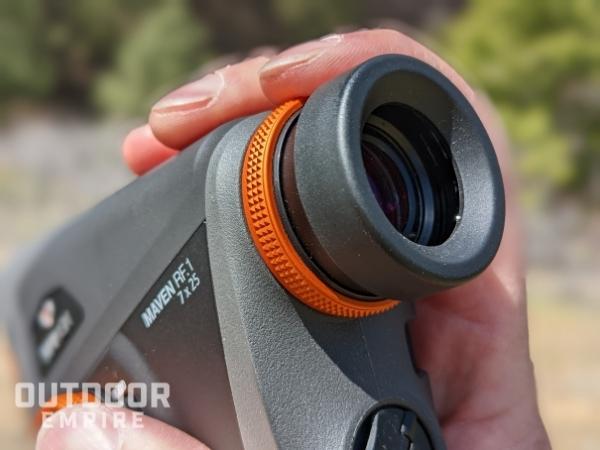
When it comes to optics, I think the RF.1 is ahead of most rangefinders on at least four fronts.
Eye relief adjustment: Unlike less expensive rangefinders and even some in the same price range, the RF.1 has an adjustable eyecup. I found this helped keep the glare out of my field of view, and it’s nice for people who wear glasses.
Objective lens: The RF.1 has a 25mm objective lens diameter, which is notably larger than most hunting and shooting rangefinders. The clear glass lets in lots of light and the field of view is nice and large, which especially helps when you’re ranging objects that are pretty close to you.
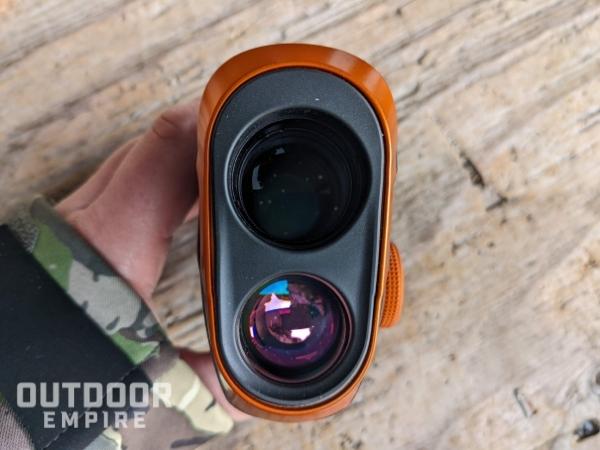
Magnification: 7x magnification is as good as it gets with rangefinders, and it is especially useful, necessary almost, for ranging distant targets. Most other rangefinders have 5x or 6x which is less good for long-range shooting.
Focus: Another feature only really found in more expensive rangefinders is a diopter focus adjustment ring around the eyecup. You can see what you want without the blur.
With this kind of optical quality, I find myself reaching for my binos less because I can both glass a ridge and get a measurement at the same time with the RF.1.
Nice Bright Red Display
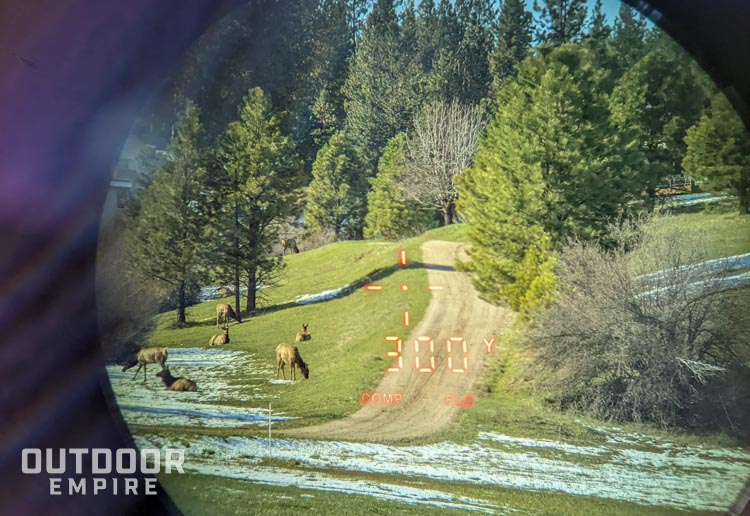
After trying out 10 or more rangefinders, I knew that a red display was a must-have.
The RF.1 has a nice, clear red display. With five brightness settings, I found it easy to read in both low light and bright conditions.
You can easily adjust the brightness settings on-the-fly by turning the dial on the side at any time, no button presses. I thought this was super nice compared to navigating through a whole menu on other rangefinders.
Easy to Understand
The display is also easy to interpret and read. I like how the default settings leave minimal information displayed, maximizing what you are viewing through the optic. By default, the display shows only the essentials:
- Reticle (choice of five different designs)
- Distance measured
- Measurement display mode (angle compensated or line of sight)
- Measurement type mode (field or forest)
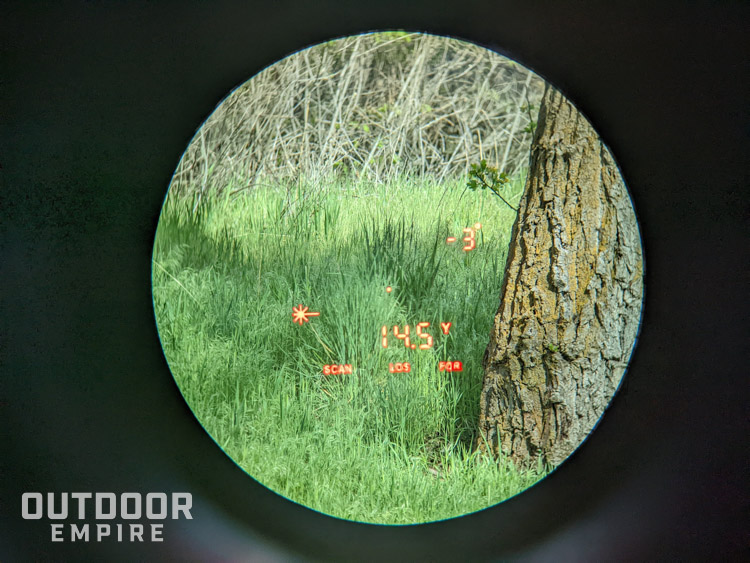
When you first turn it on, you also see a battery indicator. And when you are actively firing, it will show a little laser beam icon. You’ll also see the word SCAN below the output if you hold the fire button down to scan.
I like how this display is more dynamic compared to other rangefinders I’ve tried.
Even in special modes, it doesn’t just throw up a bunch of static information. It will automatically turn on or off different indicators from when you are firing to when the measurement is locked in. That way, you only see what is most relevant at any given moment. Very intuitive and user-friendly!
Best Menu Navigation I’ve Tried
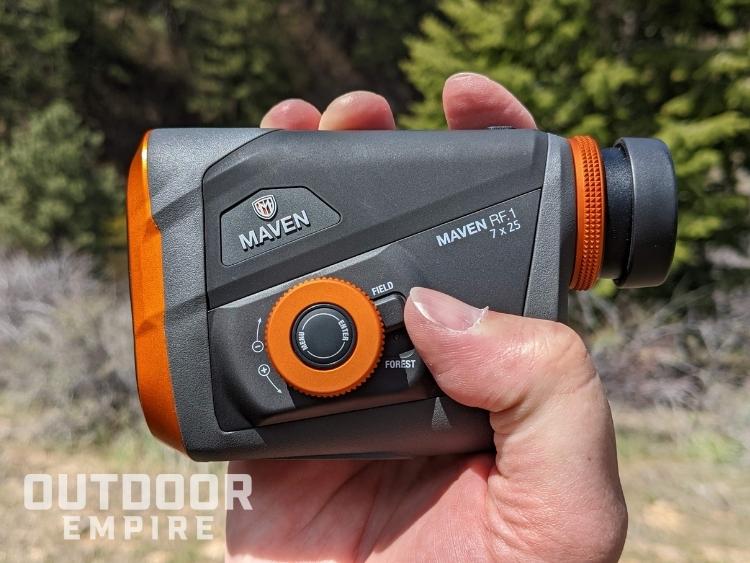
Finally, navigating the RF.1 menu is also easier than other rangefinders and I attribute that primarily to the added tactile buttons and the dial.
Others usually have two buttons (mode and fire), so you have to click a whole bunch to change the settings. But you can navigate through the RF.1 menu way faster and change settings much more intuitively.
- Fire button: powers unit on, triggers a measurement, exits settings menu
- Menu/Enter button: cycles through settings, confirms selection
- Dial: cycles through settings options forward or backward (no more clicking 10 times to get back to that option you accidentally skipped)
- Field/Forest switch: switches between field and forest mode…duh
Let’s just say I didn’t have to read the manual to figure out how to change settings, and it was super easy.
Form Factor is a Tad Bulky
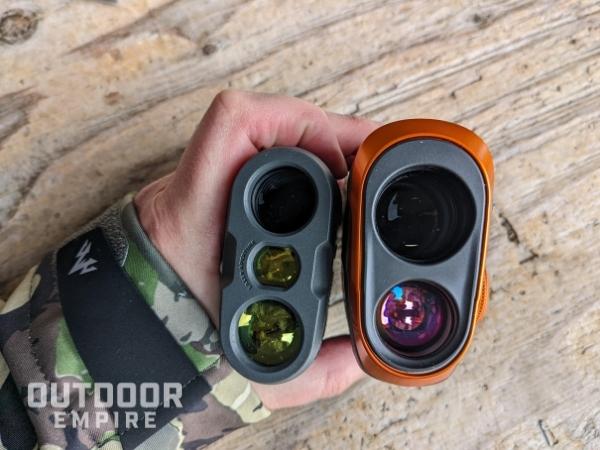
The Maven RF.1 definitely feels good in the hand, but it comes in quite a bit larger than my other favorite hunting rangefinder, the Leupold RX-1400i TBR/W. In fact, at 10 ounces, it weighs twice as much and takes up a lot more volume in a pouch compared to the Leupold.
Recommended: Leupold RX-1400i TBR/W Review (Best Under $200)
That said, this is not a dealbreaker at all. It still has a sleek design with a grippy surface (the gray part) that makes it easy to hold onto. And I would expect it to be somewhat larger to house the larger and better glass.
What’s important is that it fits in a rangefinder or bino sidekick pouch just fine. The dial doesn’t seem to hang up on things as much as I expected.
If I could make this product better, I’d try to slim it down and improve the ergonomics.
Ruggedly Handsome
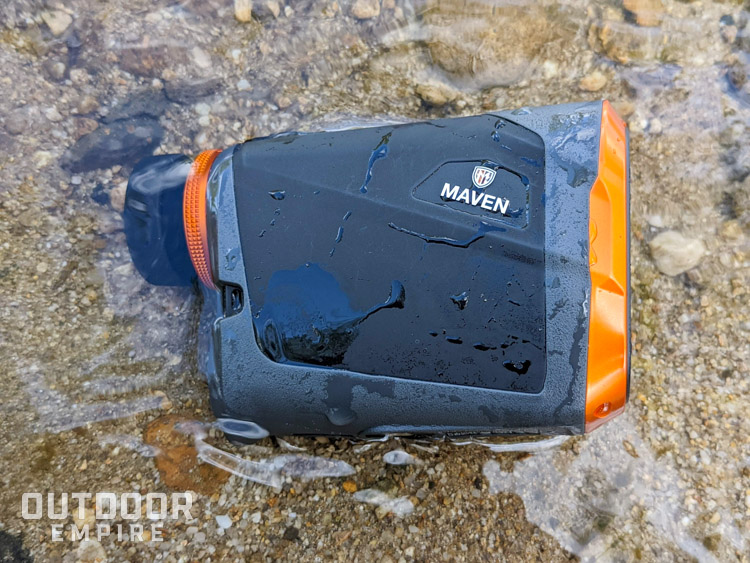
This is a strong point of the Maven RF.1. Not only are its looks as rugged as Kevin Costner’s, but it feels like it’s genuinely made of nicer materials than cheaper rangefinders.
There are a lot of polymer pieces with rubberized armor. The knurled menu and focus dials are aluminum. The battery cover feels like durable metal, unlike the cheap plastic covers I’ve seen on others. The frame is made of magnesium and aluminum.
It does not appear to have an official IP rating (ingress protection), but I wouldn’t be nervous about taking it out to the field and dangling it from my bino pouch or belt. I expect this to hold up fine.
No Worries Warranty
In case it doesn’t hold up, Maven has a stellar warranty that is only rivaled by the likes of optics giant, Vortex.
The RF.1 has an unconditional lifetime warranty. Maven will repair or replace it if something goes wrong.
Their warranty terms literally say, “We don’t care where or when you bought it or if it was your fault or not – if it says Maven, we will take care of it.”
That is pretty amazing! Especially for an optic with electrical components.
Obvious exceptions are loss, deliberate damage, or cosmetic damage that doesn’t affect performance.
Features Nail the Fundamentals
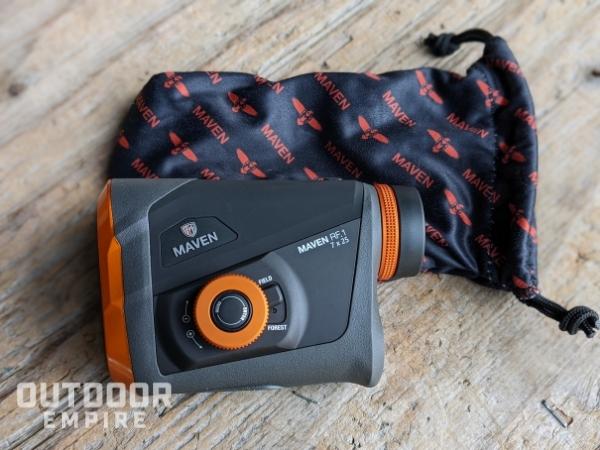
I wouldn’t necessarily say that this rangefinder is packed with special features, but I do think it nailed the fundamentals.
Long-range Worthy
The maximum distance itself is not the top priority for me since it is more of a thing that classifies the rangefinder and its price point rather than determines its quality.
And, frankly, I’m not usually going to seek out a rangefinder with as long of a range as the RF.1. I generally want a rangefinder to see if a deer or turkey is within my confident shooting range or estimate how long it’ll take me to hike in the hills from one point to another.
However, I do want to see how close to the advertised range a rangefinder is capable of. The 4500 yards claim of the Maven is bold. But being familiar with Laser Technology, who makes the laser sensor, it seemed feasible to me.
The maximum range specs of the RF.1 are:
- 4500 yards (2.5 mi) to a reflective target
- 3000 yards (1.7 mi) to trees
- 2700 yards (1.5 mi) to a deer
- 5 yards minimum range
When I was scouting for turkeys, I easily got a read on a non-reflective peak across a valley at a distance of over 3200 yards.
Locking onto a deer that far away would be pretty unlikely since it’d be such a small target at that distance, but I do believe you could get a range on whatever surface was right next to one.
At the end of the day, I’m very confident that this rangefinder would be ideal for long-range shooting, whether for fun, competition, or hunting.
Tripod Friendly
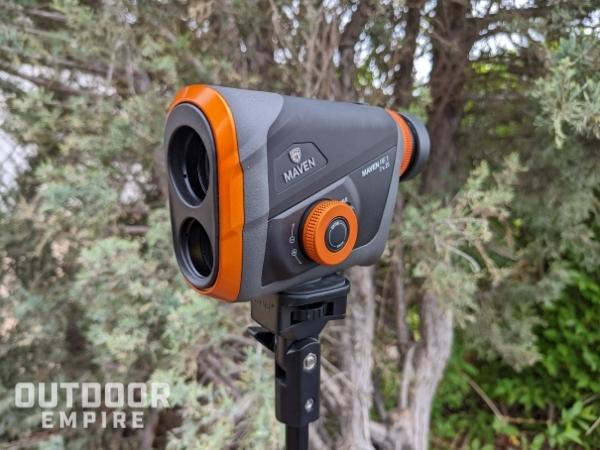
Speaking of long-range, the only way you could get a returned measurement at those great distances is if you can stabilize the rangefinder. Luckily, the RF.1 has a ¼” x 20 threaded female mount so that you can put it on a tripod.
This is a simple but handy feature you don’t find on most hunting rangefinders.
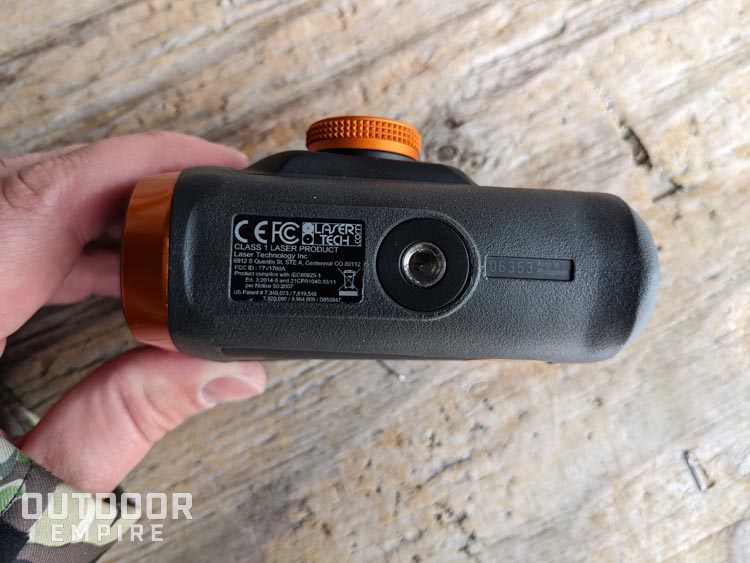
Angle vs. Line of Sight Mode
While the RF.1 is not packed with advanced ballistics or archery-specific functions, it has the two main modes that hunters and shooters use 90 percent of the time.
1. Angle compensation mode (displayed as COMP) calculates an adjusted, horizontal-equivalent distance based on the line of sight distance and the angle of elevation.
2. Line of sight mode (displayed as LOS) gives you the direct line of sight distance, and it displays the elevation angle in degrees at the same time.
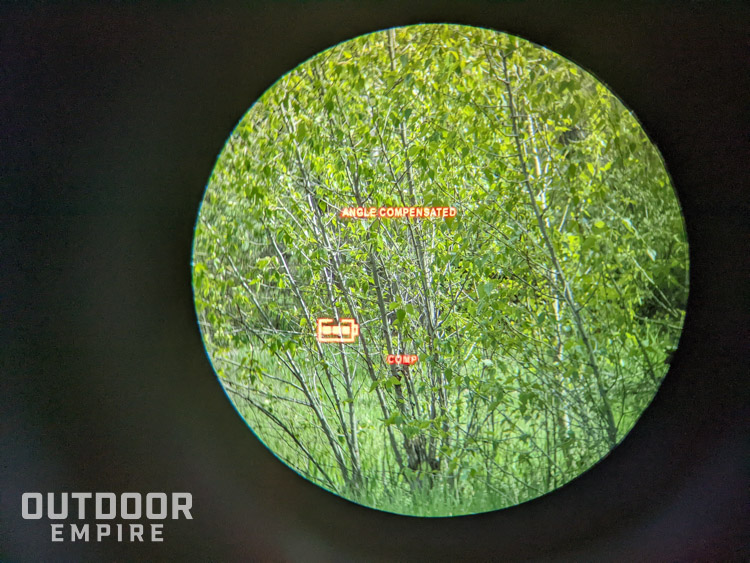
Angle mode is a quick way to calculate how you should aim your rifle or bow. While this is not as robust as some rangefinders like the Leupold TBR/W (Total Ballistics Range Wind) series that can give you distances to dial into your scope based on specific cartridges and loads, it is good enough for me.
Besides, people doing long-range shooting requiring on-the-spot math calculations are likely using either a ballistics app on their phone or a printed chart they carry. Meanwhile, people like me aren’t shooting that far out, and the basic measurement from the RF.1 is all I need.
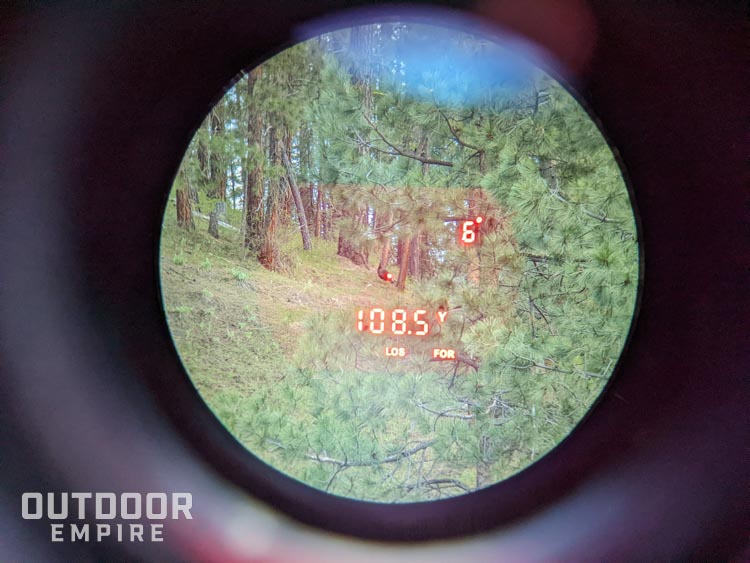
Forest vs. Field Switch
Maven made this one pretty self-explanatory. Use field mode when you’re in more open environments with less vegetation and fewer obstructions to your line of sight. Forest mode is best for those areas that are more densely vegetated like in mixed forests.
When fired, laser rangefinders send out multiple pulses and subsequently receive multiple return measurements.
When in Forest mode, the rangefinder will display a distance based on the farthest measurement. This is generally the weakest returned pulse. It will try to ignore all the branches, foliage, and even moisture-filled air particles that may partially obstruct the laser’s path.
In Field mode, it will display the strongest measurement received.
I found these modes to work quite well, though I wouldn’t expect high accuracy in really foggy or rainy conditions or even some super dense forests.
Maven RF.1 Compared to the Alternatives
At $450 (MSRP), the Maven RF.1 is not cheap. But apples-to-apples, it is extremely well priced. Here are a few competitors in the same class and how they stack up against the Maven.
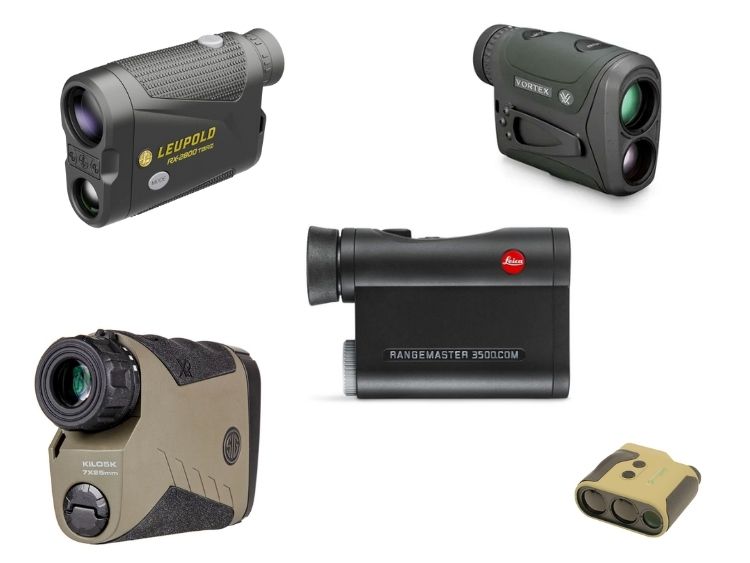
Leupold RX2800 TBR/W (Check price): Given how much I like the more budget-friendly RX-1400i TBR/W from Leupold, this is probably the alternative I would most likely consider to take the place of my RF.1. This rangefinder has a shorter max range than the RF.1, but it matches the optics quality, display, and ruggedness.
I like that it is more compact and lighter than the Maven, and it also has the fancy ballistics features. But, the warranty is not nearly as good.
Vortex Razor HD 4000 (Check price): This is what I would consider the closest equivalent to the RF.1. It is the only alternative with a warranty as awesome as Maven’s. And it has similar optics quality, form factor, ruggedness, display, and features. It does have a slightly inferior max range, but not enough to sway a decision.
The biggest difference is the price. MSRP for the Vortex Razor HD 4000 is $729.99, $280 more than the Maven RF.1. However, you can usually find it at retailers for around $500, so pretty close to the Maven.
Leica Rangemaster CRF 3500.COM Rangefinder (Check price): While this high-end rangefinder from Leica is relatively close in specs compared to the RF.1, it costs nearly three times as much. The Leica does have some smart tech built-in where it can wirelessly connect to your smartphone or Apple Watch to use their hunting and ballistics app.
Other rivals include the Newcon Optik LRM 2200SI at double the price of the RF.1 and the Sig Sauer KILO5K, which boasts a marginally longer range for a lot more money.
Of all these, the Maven is the least expensive and has what is arguably a better laser sensor.
Bottom Line
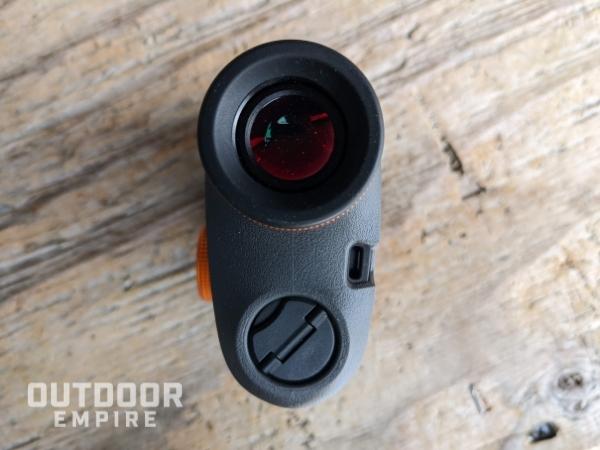
I recommend the Maven RF.1 for long-range shooters and hunters that value high-quality gear. There’s no reason to spend even more money just for a bigger brand name. With quality glass, a high-performing laser sensor, and an unbeatable warranty, Maven will not disappoint.
You’ll probably love this brand anyway. Even their packaging was cool, all paper-based without a bunch of wasteful plastic wrap.
Truth be told, I was pretty happy when I settled on the Leupold RX-1400i TBR/W, which I still recommend for practical hunters that want the best rangefinder that the least amount of money can buy.
If you don’t see the utility in measuring distances out more than 1000 yards, the Maven is probably overkill and you’ll be happy with something less expensive like that Leupold.
Empire Crowned Award

I know it’s tough to pull the trigger on buying an optic when you haven’t been able to touch and feel it in a big box store. But take it from me. This definitely looks and feels good in the hand.
Having manhandled nearly all the rangefinders available at Cabela’s and Sportsman’s Warehouse myself, I would buy the RF.1 knowing what I do now.
The Maven RF.1 is a high-end hunting and shooting rangefinder at a middle-of-the-road price. It makes great sense as an upgrade pick, a splurge, a one and done purchase, or even just more bang for your buck if you were looking at other mid-grade rangefinders. It’s more than I need, but it’s everything I want.
- Best price in its class by a long shot
- High-quality laser sensor with longer max range than competition
- Intuitive controls and display are easy to use
- Unlimited lifetime warranty could make it the last rangefinder you ever buy
- Field and Forest modes make it useful in both open country and dense vegetation
- Bulkier and heavier than many alternatives
- No advanced ballistics or archery functionality
Recommended reading:

